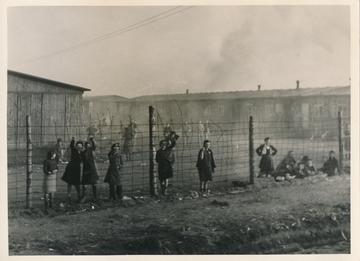From Conflict to Peace: Celebrating VE and VJ Day
Soldiers of Oxfordshire Museum launches new exhibition
From Conflict to Peace: SOFO Museum’s New Exhibition Marks 80 Years Since VE and VJ Day
- New exhibition featuring stories of Oxfordshire celebrating VE & VJ Day 80 years ago
- Accounts of soldiers from Oxfordshire and Buckinghamshire that liberated towns, POWs and concentration camps in the latter stages of the Second World War
- A programme of events at the museum and in Woodstock mark the anniversaries of VE Day and other milestones from 1945
In 2025, Soldiers of Oxfordshire Museum (SOFO) will commemorate the 80th anniversaries of Victory in Europe (VE) and Victory over Japan (VJ) Day—two defining moments that signaled the end of the Second World War. The museum’s brand-new exhibition, From Conflict to Peace: Celebrating VE and VJ Day, will open on Tuesday, 1 April 2025, running until Tuesday, 18 November 2025.
This powerful exhibition will explore how Oxfordshire marked these historic victories, from jubilant street celebrations to the experiences of local men and women serving in the armed forces. Through personal stories, artifacts, and rare photographs, visitors will gain insight into the final stages of the war and the lasting impact on those who lived through it.
Celebrating Victory: Oxfordshire in 1945
When the war in Europe ended on 8th May 1945, celebrations erupted across the country, and Oxfordshire was no exception. Women working for MI5 at Blenheim Palace recalled hearing the bells of Woodstock’s St Mary Magdalene Church ring out in celebration. In Oxford, the streets came alive with joy—locals danced in line from St Giles to Carfax.
Three months later, on 15 August 1945, the surrender of Japan brought the war to a final close. Across Oxfordshire, people gathered once again to mark the moment. A bonfire blazed in St Clements, topped with an effigy of Hitler, while thanksgiving services were held at Christ Church Cathedral, where the moral implications of the atomic bomb were also debated.
The Hard-Fought Road to Peace
For many Oxfordshire servicemen, 1945 was a year of both brutal conflict and new challenges in the wake of victory. The county’s two regiments, the Oxfordshire & Buckinghamshire Light Infantry and the Oxfordshire Yeomanry, played key roles in these final battles.
The Oxfordshire Yeomanry and the Cost of War

The Yeomanry, serving within the Royal Artillery, faced some of the war’s darkest moments. 251 ‘Banbury’ Battery, stationed in Singapore, was captured when the island fell in 1942. The men endured over three years as Prisoners of War, forced to work in inhumane conditions on the infamous Burma-Siam Railway. They were only freed following Japan’s surrender in 1945.
Meanwhile, 249 Battery moved through Europe, advancing from France into the Netherlands. On 15 April 1945, they were among the first British forces to enter the Bergen-Belsen concentration camp, where they confronted unimaginable horrors. Thousands of malnourished prisoners lay dying, while disease and starvation continued to claim lives even after liberation.
The 2nd Battalion, Oxfordshire & Buckinghamshire Light Infantry
Famous for their role in capturing the Caen Canal and Orne River bridges on D-Day, the 2nd Battalion faced more trials in 1945. During Operation Varsity—the largest single-day airborne operation in history—they fought to secure crossings over the Rhine. Gliders carrying troops came under intense anti-aircraft fire, with many breaking apart mid-air. Major John Tillet’s D-Company, which started the battle 140 strong, was reduced to just 63 men by the time they were relieved.
As the war in Europe drew to a close, the battalion received orders to race to Wismar, Germany, preventing Soviet forces from advancing into Denmark. On 7 May 1945, they formed the Guard of Honour as Field Marshal Montgomery met Soviet Marshal Rokossovsky.
Even after victory, new challenges awaited. In October 1945, the battalion was deployed to Palestine, just as a wave of violent resistance to British rule erupted.
The 1st Buckinghamshire Battalion and Secret Missions
Another Oxfordshire regiment played a crucial role in gathering intelligence. The 1st Buckinghamshire Battalion was part of the secretive Target (T) Force, tasked with securing military and industrial sites across Holland and Germany. These units were the brainchild of James Bond creator, Ian Fleming.
Among them was Sergeant Harry Carr, one of only 210 survivors from the battalion’s desperate defense of Dunkirk in 1940. In 1945, he helped liberate the Dutch town of Delft, where British soldiers shared their rations with local children who had suffered through years of food shortages.
Bringing History to Life: Talks and Events
The From Conflict to Peace exhibition will be accompanied by an exciting programme of talks and events, offering deeper insight into the war’s final months and its aftermath:
- Saturday, 12 April: Dr Myfanwy Lloyd will speak about the liberation of Bergen-Belsen, sharing research that led to SOFO’s new permanent display on the camp.
- Thursday, 17 April, 7pm: Professor Anthony Glees will discuss Nazi war crimes on the island of Alderney, an episode of history that has long gone unpunished. Glees was an advisor to Margaret Thatcher’s War Crimes Inquiry (1989-91).
- Saturday, 10 May: Woodstock’s Market Square will host an 80th Anniversary VE Day Celebration, featuring live 1940s music, historical displays, local food, and family-friendly activities from 4pm - 8pm.
- Saturday, 10 May, 2pm: Lt. Col. (Retd) Mike Tickner will present Savage Wars of Peace, a talk on post-war conflict in Asia, as former colonies pushed for independence following Japan’s surrender.
A Lasting Legacy
From Conflict to Peace offers a unique opportunity to discover the stories of Oxford’s soldiers and civilians—their struggles, sacrifices, and triumphs. Eighty years on, SOFO Museum invites you to explore the final days of the war and its enduring impact on Oxfordshire and beyond.
Don’t miss this chance to step back in time and experience history through the eyes of those who lived it.


